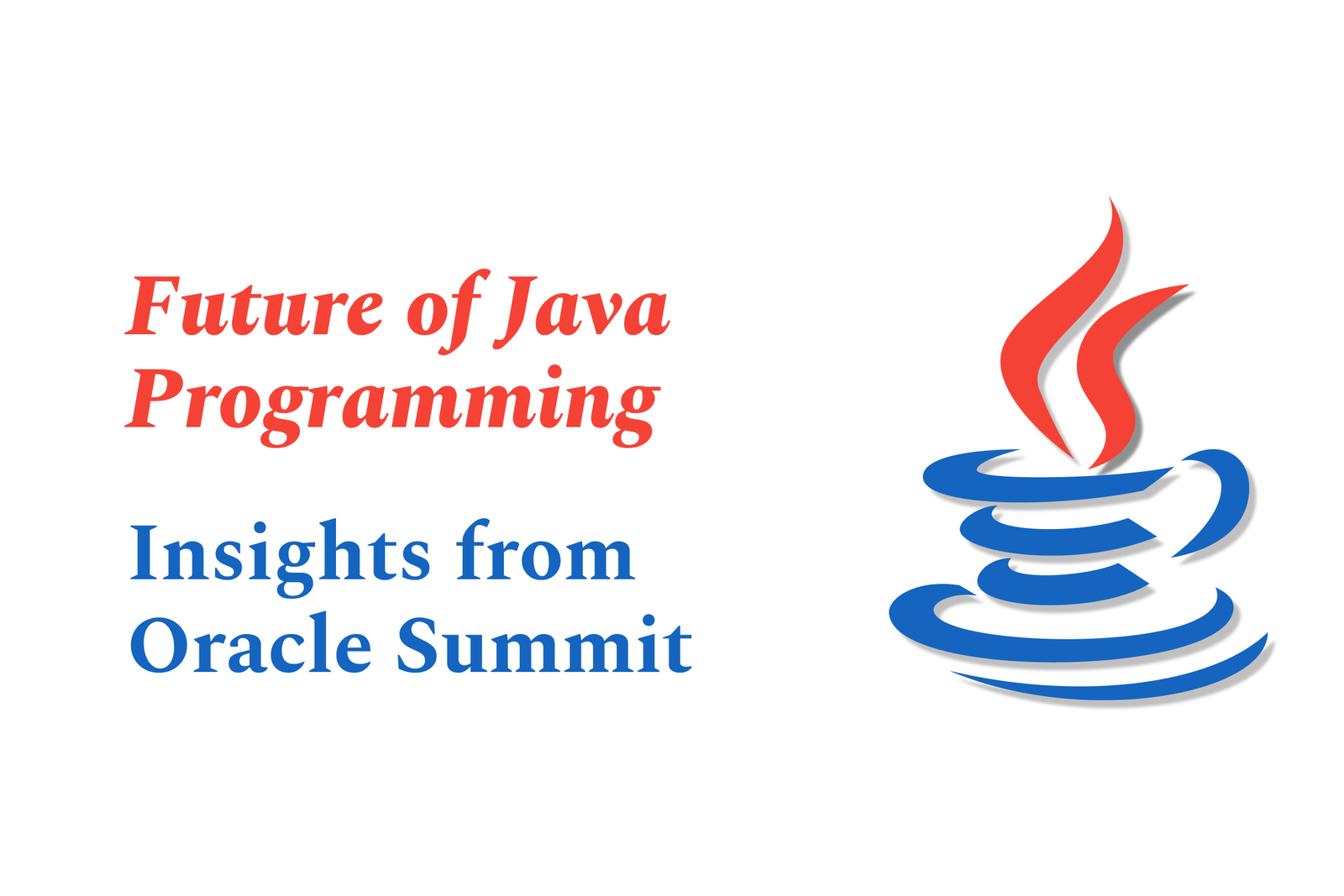Future of java programming: insights from oracle summit
The Oracle Summit showcased the future of Java programming, highlighting innovations like Project Loom for improved concurrency, enhanced pattern matching, and evolving JVM technologies. These advancements ensure Java remains a powerful, adaptable language for modern software development.
Future of Java Programming: Insights from Oracle Summit
1 ) Introduction to the Oracle Summit and Java Developments
The Oracle Summit highlighted key advancements in Java programming, emphasizing the language's ongoing evolution aligned with modern development challenges. Attendees, including developers and educators, gained valuable insights into upcoming features and Java's strategic direction under Oracle's stewardship.
2 ) Key Innovations Presented: Project Loom and Pattern Matching
A central highlight was the introduction of Project Loom, aimed at simplifying concurrency in Java applications. This advancement significantly benefits performance intensive domains like parser development. Additionally, enhancements to switch case pattern matching were showcased, improving code readability and efficiency—critical for maintainability in complex Java projects.
3 ) Oracle's Evolving Ecosystem and Software Management
Besides language features, the Summit covered broader software management topics relevant to Oracle’s ecosystem, including the new VSAM program and strategic software management approaches incorporating AI and licensing models. These insights provide developers and IT asset managers practical strategies for software asset management in 2024 and beyond.
4 ) Community and Collaboration: The JVM Language Summit
Oracle’s JVM Language Summit was cited as a vital event fostering deep technical collaboration among JVM language implementers, runtime developers, and language designers. This summit drives advancements in JVM internals, Project Leyden, virtual threads, and other emerging JVM technologies enhancing the Java platform's future proofing.
5 ) JavaOne 2026 Preview and Java’s Future Outlook
Looking ahead, JavaOne 2026 promises to further unite the community, providing sessions on Java language enhancements, AI integration, and performance tuning. The conference will celebrate Java’s rich history and continued innovation, underscoring themes of simplicity, expressiveness, and adaptability to new technology paradigms.
6 ) Practical Impact for Developers and Educators
Insights gained from the Oracle Summit are transforming both professional practice and education. By integrating cutting edge features like Project Loom and advanced pattern matching into curricula, educators aim to equip developers with contemporary skills aligned with real world demands.
Summary
The Oracle Summit furnished a comprehensive view of Java’s future, highlighting technological innovations, ecosystem evolution, and community engagement. With substantial investments in concurrency models, language expressiveness, and software management integrations, Java continues to solidify its position as a robust, versatile programming language well suited for the challenges of modern software development.
https://justacademy.in/news-detail/top-android-customization-features-this-year
https://justacademy.in/news-detail/flutter-on-raspberry-pi:-new-examples
https://justacademy.in/news-detail/ios-19-localization-updates-for-global-apps
https://justacademy.in/news-detail/building-secure-apple-pay-experiences-with-ios-19
https://justacademy.in/news-detail/flutter-4-migration-guide-for-teams
Related Posts
In 2025, top Angular libraries offer modern, feature-rich components and tools for building dynamic web apps. From powerful data grids to low-code platforms like UI Bakery, these libraries enhance development speed, UI design, and scalability, making them essential for Angular developers.
Migrating from AngularJS to Angular 17 involves gradually upgrading your app by running both frameworks together using tools like ngUpgrade, rewriting components in TypeScript, and adopting Angular’s modern architecture to enhance performance, maintainability, and long-term support.
Angular state management tools help organize and handle app data efficiently, improving scalability and maintainability. Popular options include NgRx for robust, RxJS-based patterns, and newer Signal Store solutions that offer simpler, reactive approaches integrated tightly with Angular’s latest features.
RxJS in Angular empowers developers to manage asynchronous data streams with powerful operators like `forkJoin`, `combineLatest`, and `zip`. Mastering these key operators in 2025 is essential for building efficient, reactive applications that handle complex event sequences seamlessly.
Angular performance optimization in 2025 focuses on improving app speed and responsiveness by using techniques like OnPush change detection, lazy loading, efficient data caching, and AOT compilation. These practices reduce load times, enhance user experience, and ensure scalable, fast Angular applications.
In 2025, Angular remains preferred for large-scale, enterprise apps with its robust, all-in-one framework, while Vue attracts developers seeking simplicity and fast development for smaller projects. Both frameworks excel, with choice driven by project needs and team expertise.
Angular Signals are a new reactive primitive in Angular 16 that enable fine-grained, efficient change detection by automatically tracking dependencies and updating only affected parts of the UI. They simplify state management and boost app performance, revolutionizing Angular's reactivity model.
Angular interview questions to prepare in 2025 focus on core concepts like components, directives, data binding, routing, and dependency injection, along with TypeScript mastery and latest Angular features to ensure strong practical knowledge for building scalable, efficient web applications.
AngularJS reached its official end of support in January 2022, meaning no further updates or security patches. To ensure app security and performance, developers should consider migrating to modern Angular versions or seek third-party long-term support options if immediate migration isn’t possible.
The Angular Roadmap 2025 highlights upcoming features focused on improving developer experience and performance, including zoneless Angular, Signals integration, enhanced Forms, async data handling, improved HMR, and expanded Angular Material/CDK enhancements, driving modern, efficient web app development.










